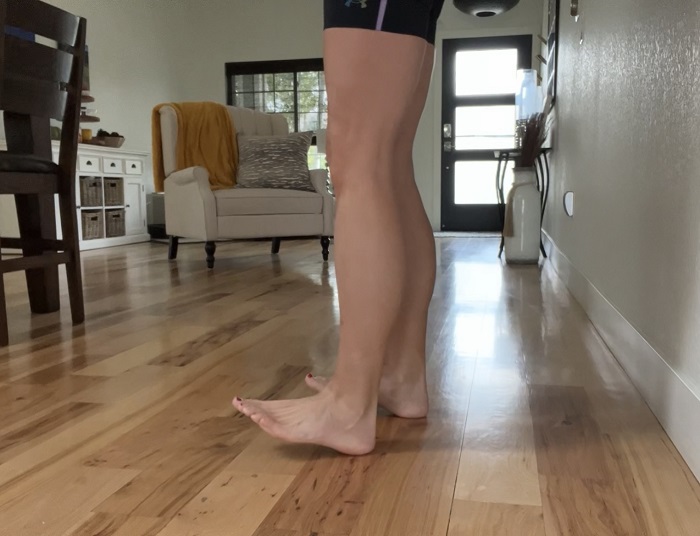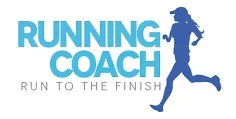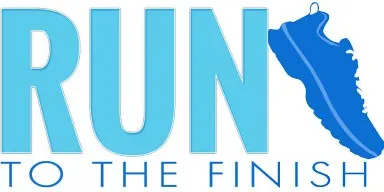Strength training is a key component to improved performance and injury prevention for runners. Many of us may already regularly incorporate strength training into our daily and weekly routines and reap the benefits. But what about foot strengthening exercises? Those might have slipped your mind!
Through our experience, we have learned that there’s more to running than just having strong legs. Strength training is important for reducing muscle imbalances and injury risk, improving efficiency, and increasing speed, among many other reasons.
There are plenty of programs and suggestions for upper body, lower body, and core strength work.
But, what about our feet? Despite the immense impact (literally) our feet play in our running, it’s easy to forget that they need attention too.
What is great about strength and mobility work for your feet is that you can easily do the exercises at home since they don’t require a lot of space or special equipment beyond what you probably already have around the house.
Like with our hips and glutes, core, and upper body, it’s important that the muscles of our feet are strong and that our toes and ankles have good range of motion. Remember, when one part of our body is out of whack it often leads to issues in other areas.
Weak and poorly moving feet can lead to issues up the chain in our knees, hips, and back.
Keep reading to learn more about why foot strength matters, its benefits, and some of the top exercises to make sure our feet are in tip top shape!
Why Foot Strength Matters for Runners
Let’s think about running (and walking too) for a second and how we use our feet to perform the movement. Our feet help propel us forward and they take on the initial impact of our landing. They are both generating and absorbing force and they’re doing so one at a time, not together as a unit.
That’s a lot of force for what’s actually a rather small body part!
However, that small body part is actually quite complex mechanically. Each foot has 26 bones, 33 joints, and more than 100 small muscles, tendons, and ligaments. So combined, more than 159 structures per foot are working together to allow us to hold ourselves up, move, and absorb and transmit force.

With that said, you can imagine why weak muscles or issues with the mechanical workings of the foot, however small, can impact our ability to run or walk and affect the functional movement of the rest of our body.
My long time friend and Physical Therapist, Stuart Wilson of Elevate PT, is often reminding athletes that they can’t neglect time for both strengthening and stretching foot muscles.
Issues Caused by Weak Feet
Weak or poorly functioning feet can lead to a number of issues, both in the feet themselves and further up the kinetic chain. Some common issues or running injuries of the foot related to weak feet include:
- Plantar fasciitis – A type of inflammation and tendonitis with the plantar fascia (many a runner’s worst nightmare!)
- Metatarsalgia – Irritation of the tissues and muscles around the metatarsals (ball of foot pain)
- Stress fractures in the feet – A crack within a bone
- Bunions – Bony lumps on the side of the big toe at the joint
- Neuromas – Tissue around a nerve leading to a toe thickens and can cause pain or a burning sensation
It’s also important to be aware of impacts further up the body. Some of these issues and injuries include:
- Ankle sprains
- Achilles Tendonitis
- Stress fractures in the shins
- Runner’s Knee
- Low back pain
That all sounds awful and many of us have probably experienced one or more of those issues through our years of running.
The good news is, though, that we can get rid of or prevent all of the above by giving our feet some much-needed love!
Benefits of Strong Feet for Runners
According to Dr. Lisa Mitro, a physical therapist dedicated to working with runners, “Foot strength should be addressed in all runners for a strong push off, stable foundation during foot strike, and faster turnover to increase speed.”
But she doesn’t stop there. She also addresses mobility, saying, “It’s important to work on the mobility of ankle dorsiflexion and 1st MTP extension. Hypomobility can increase risk for injury and affect the biomechanics of the running cycle.”
We’ll get into specific exercises shortly, but let’s first address some of the benefits of strong feet. These include:
- Increased stability
- Increased efficiency
- Injury prevention
- Improved performance
Those are pretty convincing reasons to take care of our feet. All of them mean more time doing what we love and doing it better. So today we’re going to look at some foot strengthening exercises and mobility moves to help you improve.
10 Foot Strengthening Exercises for Runners
While it would be nice if taking care of our feet simply meant massages and pedicures, there’s a bit more to it than that. However, that doesn’t mean there isn’t a place for those things. I personally love a massage and both things can be an important part of self-care and foot health.
Below you will find some of the best exercises for foot strength that will build and maintain strong feet and good mobility in your feet and ankles.
Any and all equipment you may need, you probably have in your home so the only major investment will be time. I promise it’s not a lot of time either.
You should try to incorporate these into your regular runner strength training routine or before and after runs. Like with a lot of other things I have shared, consistency is key!
Unless otherwise specified, all the exercises below can and should be done barefoot.
1. Toe Curls
All you need for this are bare feet and a towel. These can be done seated or standing.
- Grab a towel (a hand towel works well) and lay it flat on the floor in front of you.
- Place the toes of your right foot on the edge of the towel closest to you.
- Curl your toes to attempt to pull the towel towards you.
- Keep working until you’ve pulled the entire towel through.
- Repeat with your left foot.

2. Toe Walks/Heel Walks
This is a great move to help engage the muscles of your feet. It will also benefit your calf muscles and ankles. You can do this barefoot or in your sneakers.
- Rise up on the balls of your feet and start walking forward for up to 1 minute, always keeping your heels off of the ground.
- Focus on not rolling out or in on the balls of your feet and keeping your core engaged to help with balance. Finding a non-moving object to focus on may also help.
- Switch to heel walking by lifting your toes up and leaning slightly back on your heels.
- Walk forward for up to 1 minute keeping your toes off the ground as best you can.
- Repeat both options 2-3 times.

3. Calf Raises and Stretch
This movement helps with calf strength and mobility, both of which impact how our ankles and feet move.
- Stand on a step, curb, or sturdy box with the balls of your feet on the edge and your heels hanging off.
- Rise up onto the balls of your feet and hold for a second or two.
- Next, slowly lower your heels down until you feel a stretch in your calf.
- Repeat 10 times.
4. Toe Pickups
This is a great exercise if you have some marbles or other easily grabbable and small objects lying around.
- Grab 10-20 marbles and spread them out on the floor near you and place a cup nearby.
- Using the toes on one foot, pickup the marbles and drop them into the cup one at a time.
- Once completed, dump out the marbles and repeat with the other foot.
5. Balance on One Leg
If you’ve ever done this before, you know that it will engage a lot of stabilizer muscles in the lower leg and your feet.
- Standing on both feet, lift one leg up with your knee bent.
- Make sure your core is engaged and your hips are level and you have a nice strong and tall posture.
- Hold for 30 seconds then switch legs and repeat 3-4 times per side.
- For an added challenge, close your eyes while balancing or move your leg slowly forward and back.
- If you struggle with balance, keep a chair or wall nearby to help.

6. Alternating Toe Lifts
This one can be a bit tricky, but is important for the arches of the feet and your toes. It may be difficult at first, but with consistent work the tiny muscles involved will grow stronger.
A key here is to make sure you’re not rolling your foot to the outside or inside in an attempt to lift the correct toes.
- With your feet flat on the floor, try to lift up only your big toe while keeping the other four toes on the floor.
- Hold for 1-2 seconds and lower.
- Next, keeping the big toe on the floor, try to lift the other four toes.
- Hold for 1-2 seconds and lower.
- Alternate 10-20 times.
7. Roll Outs
Rolling out our feet is a great opportunity to provide some self-massage, just like when we foam roll other parts of our bodies.
All you need for this exercise is a small ball like a yoga ball, golf ball, tennis ball, or even a frozen water bottle. It may be best to do this seated.
- With the ball on the floor, place the bottom of your foot on the ball.
- Roll the ball front to back and back to front applying whatever amount of pressure feels good. There may be spots where you want more or less.
- Don’t forget to get up under the toes and into the arches of your feet.
- Do 30-60 seconds per foot and repeat if desired.

8. Sitting On Stretched Feet
This move helps with mobility in your ankles and feet.
- Kneel on the floor with your feet tucked under your glutes. The tops of your feet should be flat on the floor.
- If you feel a stretch in your feet, shins or quads here, go no further and hold for 10-20 seconds. If you don’t, gently lean back until you feel a slight stretch and hold there.
- Relax and then repeat 2-3 times.

9. Sitting on Balls of Feet
This stretch will help with ankle and toe mobility, as well as stretch the muscles of the legs and feet.
- Kneel on the floor in a bear crawl position.
- Gently sit back on your heels with your toes tucked under toward your knees.
- If you feel a stretch in this position, go no further and hold for 10-20 seconds.
- For a deeper stretch, gently lean back and then hold.
- Relax and then repeat 2-3 times.

10. Ankle Circles
Ankle circles are a great way to warm up and loosen the muscle in and around the ankle.
- Lift one foot off the ground and rotate the ankle clockwise 10 times and then counterclockwise 10 times.
- Repeat on the other foot making sure to go both directions.
As you can see, most of these foot strengthening exercises can be done anytime and anywhere and require minimal equipment. They would be a great addition to any strength workout, warm up, or cool down.
Remember, the key to running pain free and remaining injury free is to consistently do not just the big things, but the little things too. In the end, the 10-15 minutes of strength and mobility work will pay dividends and ensure there are plenty of miles in your future.
Looking for more ways to injury proof your body?
- Best Ankle Strengthening Exercises for Runners
- Complete Runner’s PreHab Program
- At Home Runner Strength Training Program
- Alleviate Arch Massager for at home relief
Other ways to connect with Amanda
Instagram Daily Fun: RunToTheFinish
Pinterest to find more Running Tips: RunToTheFinish
Facebook Community Chatter: RunToTheFinish
Sign Up to Receive a Weekly Newsletter with Top Running Tips and Laughs



 MOBO Board Review | Strength Training for your Feet
MOBO Board Review | Strength Training for your Feet